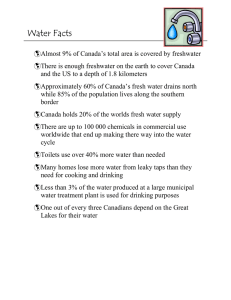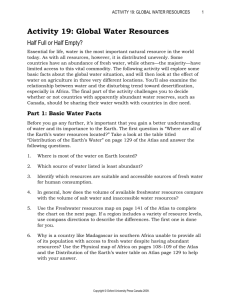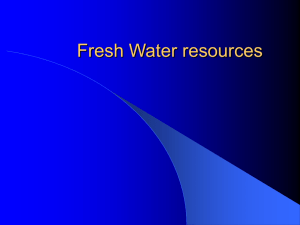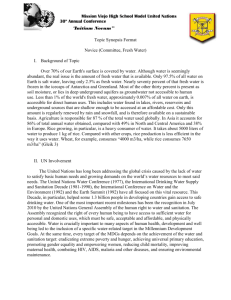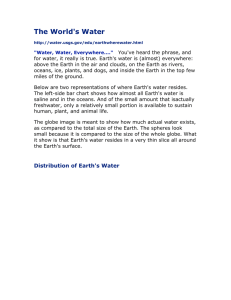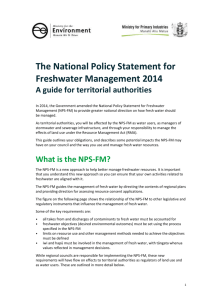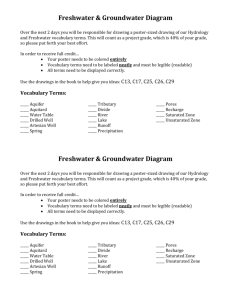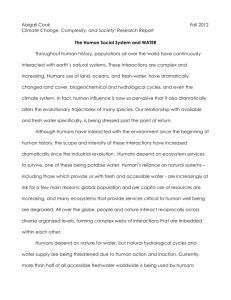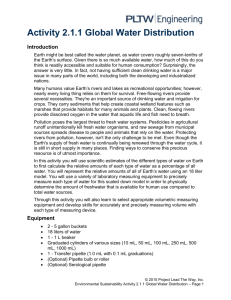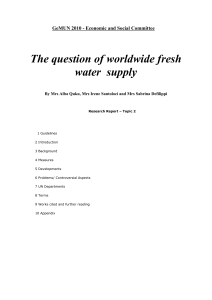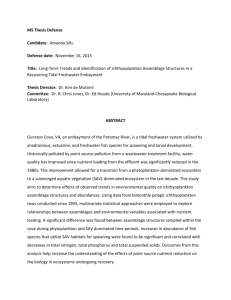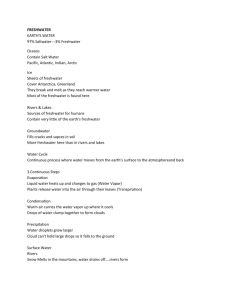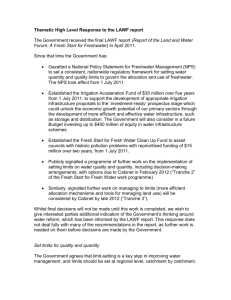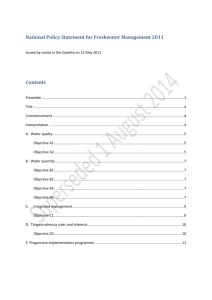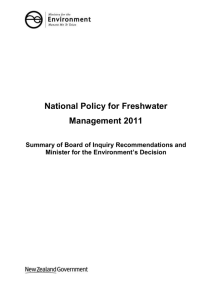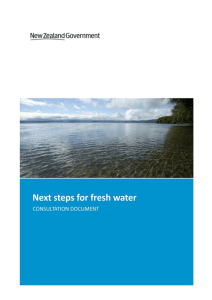Global Water Resources
advertisement
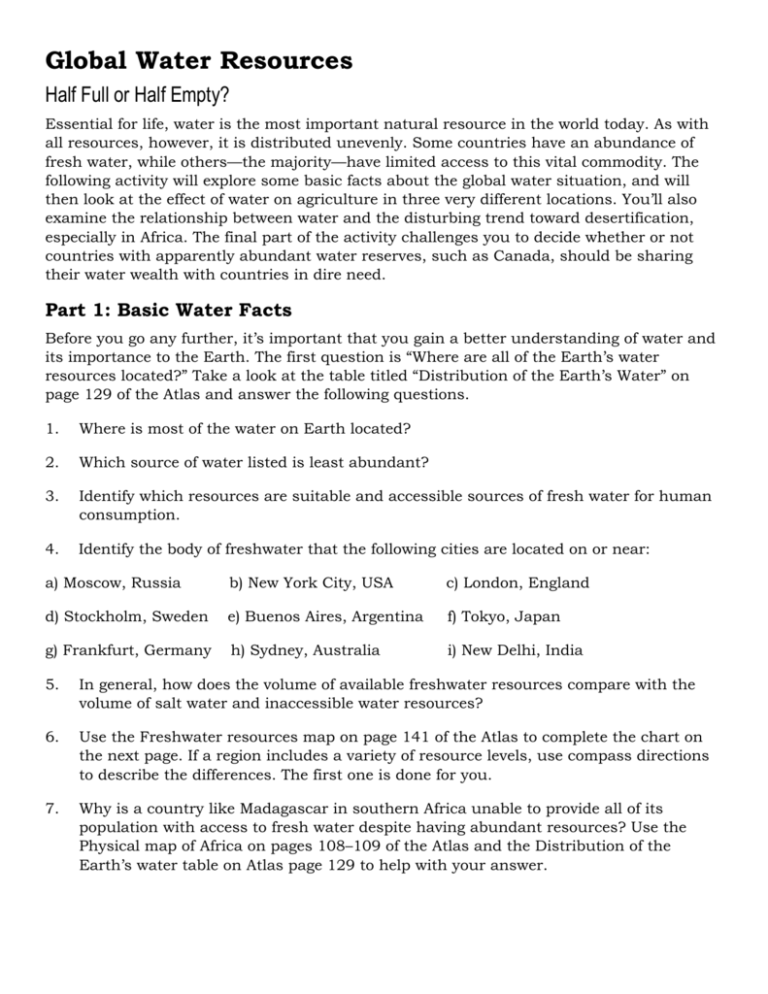
Global Water Resources Half Full or Half Empty? Essential for life, water is the most important natural resource in the world today. As with all resources, however, it is distributed unevenly. Some countries have an abundance of fresh water, while others—the majority—have limited access to this vital commodity. The following activity will explore some basic facts about the global water situation, and will then look at the effect of water on agriculture in three very different locations. You’ll also examine the relationship between water and the disturbing trend toward desertification, especially in Africa. The final part of the activity challenges you to decide whether or not countries with apparently abundant water reserves, such as Canada, should be sharing their water wealth with countries in dire need. Part 1: Basic Water Facts Before you go any further, it’s important that you gain a better understanding of water and its importance to the Earth. The first question is “Where are all of the Earth’s water resources located?” Take a look at the table titled “Distribution of the Earth’s Water” on page 129 of the Atlas and answer the following questions. 1. Where is most of the water on Earth located? 2. Which source of water listed is least abundant? 3. Identify which resources are suitable and accessible sources of fresh water for human consumption. 4. Identify the body of freshwater that the following cities are located on or near: a) Moscow, Russia b) New York City, USA c) London, England d) Stockholm, Sweden e) Buenos Aires, Argentina f) Tokyo, Japan g) Frankfurt, Germany h) Sydney, Australia i) New Delhi, India 5. In general, how does the volume of available freshwater resources compare with the volume of salt water and inaccessible water resources? 6. Use the Freshwater resources map on page 141 of the Atlas to complete the chart on the next page. If a region includes a variety of resource levels, use compass directions to describe the differences. The first one is done for you. 7. Why is a country like Madagascar in southern Africa unable to provide all of its population with access to fresh water despite having abundant resources? Use the Physical map of Africa on pages 108–109 of the Atlas and the Distribution of the Earth’s water table on Atlas page 129 to help with your answer. Region Description of Freshwater Resources North America Generally abundant, but the amount decreases as you move south and closer to the Equator. South America Europe Asia Africa Oceania Percentage of Population with Access to a Water Source (estimate) All citizens in Canada and the United States have access to a water source, while 86% of those in Mexico do. Water and Agriculture What does all this water get used for? Many of us only think of personal uses of water such as brushing our teeth, watering the garden, bathing, or drinking. But domestic use accounts for only a small percentage of total water consumption. Some is used by industry, especially for power generation, but by far the largest volume of the world’s water resources is used in agriculture. In the last 100 or so years, agricultural use has increased more than sevenfold. In places like Africa and Asia, an amazing 85–90 per cent of freshwater use is for agriculture. 8. Why do you think the use of fresh water for agricultural purposes has grown so much over the past century? Irrigation can be defined as the process of supplying crops with fresh water through channels, streams, pipes, or other human-induced solutions. The amount of irrigated land around the world for agricultural purposes is rising. In many countries, this creates a strain on freshwater supplies. Let’s compare the water resources and levels of irrigation on two continents: Africa and Asia. Use the maps on Atlas pages 129 (Water surplus or deficiency) and 141 (Irrigated land) to answer the following questions. 9. Describe the pattern of water resources you observe across these continents. 10. We can observe that Asia generally uses more of its water resources for irrigation purposes. What reasons can you hypothesize to explain why Africa does not irrigate more of its land to increase its agricultural output? 11. Predict what future impacts the continued use of fresh water for irrigation in Asia may have.
